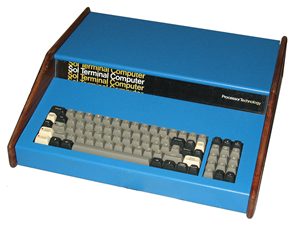5 Reasons Modern Computing Wouldn't Exist Without Lee Felsenstein
April 24, 2020
By Erin M.
Many computer pioneers are unknown to the general public. Lee Felsenstein is an early personal computer pioneer you may not be familiar with. Felsenstein spent his career innovating in hardware design and communication technologies.
Here are five reasons why you should know
Lee Felsenstein:
- As one of the creators and operators of Community Memory, the first computerized public bulletin board system, Felsenstein played a crucial role in the prehistory of chat rooms and the internet. Established in 1973 in Berkley, California, it used a San Francisco-based SDS 940 mainframe timesharing system to connect via a 110 baud link to a Teletype Model 33 at Leopold’s Records, a vinyl music shop in Berkley, where users could send and retrieve messages. Living Computers has a Teletype Model 33 available for public use that we have previously featured in our blog.
- Unhappy with the Omnitech modem used for Community Memory, Felsenstein set out to design his own early acoustic coupler modem. His successful Pennywhistle modem, completed in 1973 and commercialized in 1976, was one of the earliest modems available to computer hobbyists.
- Lee Felsenstein was an original member of the infamous Homebrew Computer Club. Started in 1975, the club was founded as a reaction to the newly released microprocessor-based MITS Altair 8800. Felsenstein moderated these meetings with a yard stick. Famous members of the Homebrew Computer Club include Steve Jobs and Steve Wozniak. Living Computers’ engineer Bruce Sherry was also a member of the club. To read more about the Homebrew Computer Club, check out Bruce Sherry’s blog post on his time as a member here:
- In 1976, Felsenstein designed his own computer around the Intel 8080 microprocessor. His computer was called the Processor Technology Sol-20. It was the first fully assembled microcomputer with a built in keyboard and television output. Living Computers has a Sol-20 microcomputer available for public use.

- Felsenstein is also the designer of the Osborne 1, the first commercially successful portable computer. Designed by Felsenstein in 1981 to be rugged, it was the first of a group of “luggable” computer models that would become available in the 1980s.
Related Blog Posts:
[MS@45] Tour Trailer: Altair BASIC
Profiles in Computing: Steve Wozniak Part I
Profiles in Computing: Steve Wozniak Part II
About the Author
Erin M.
Museum Guide
Erin has previously worked at the Museum of Science and Industry, the Frank Lloyd Wright Trust, and is a founding member of The Runaways Lab Theater in Chicago. She has been a Museum Guide at LCM+L since 2018.
An artist and noise musician, Erin’s interests include evolution in art, music, design, and technology. You can find her giving tours, creating content, and giving artifact demonstrations at LCM+L.
About the Author
Erin M.
Museum Guide
Erin has previously worked at the Museum of Science and Industry, the Frank Lloyd Wright Trust, and is a founding member of The Runaways Lab Theater in Chicago. She has been a Museum Guide at LCM+L since 2018.
An artist and noise musician, Erin’s interests include evolution in art, music, design, and technology. You can find her giving tours, creating content, and giving artifact demonstrations at LCM+L.
Category Tags